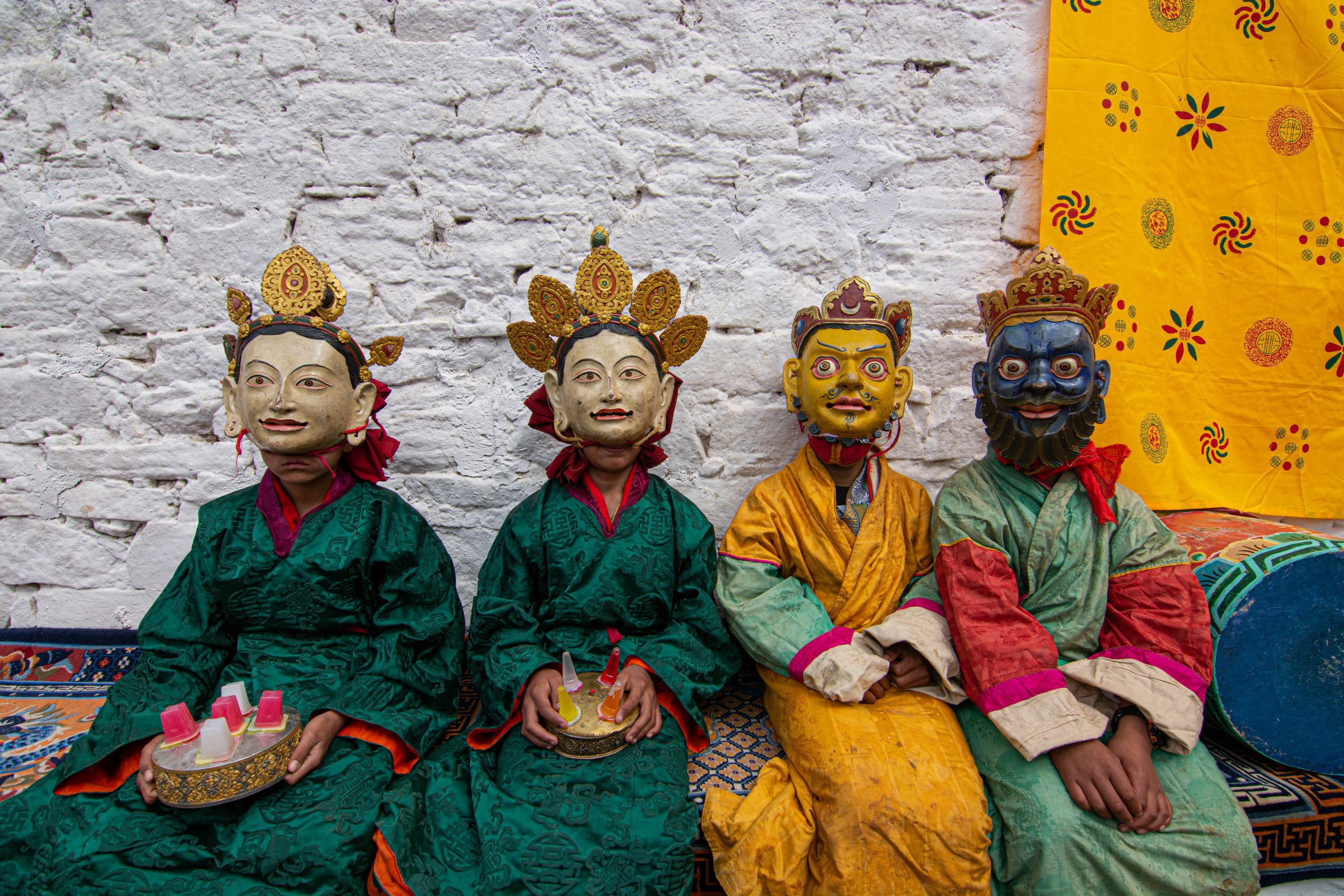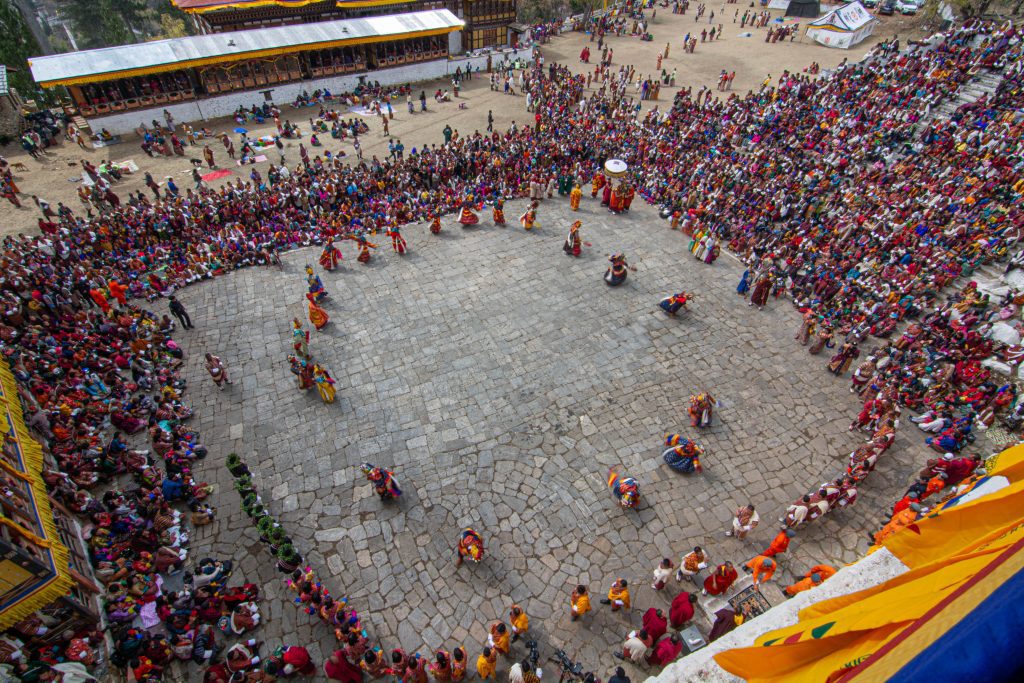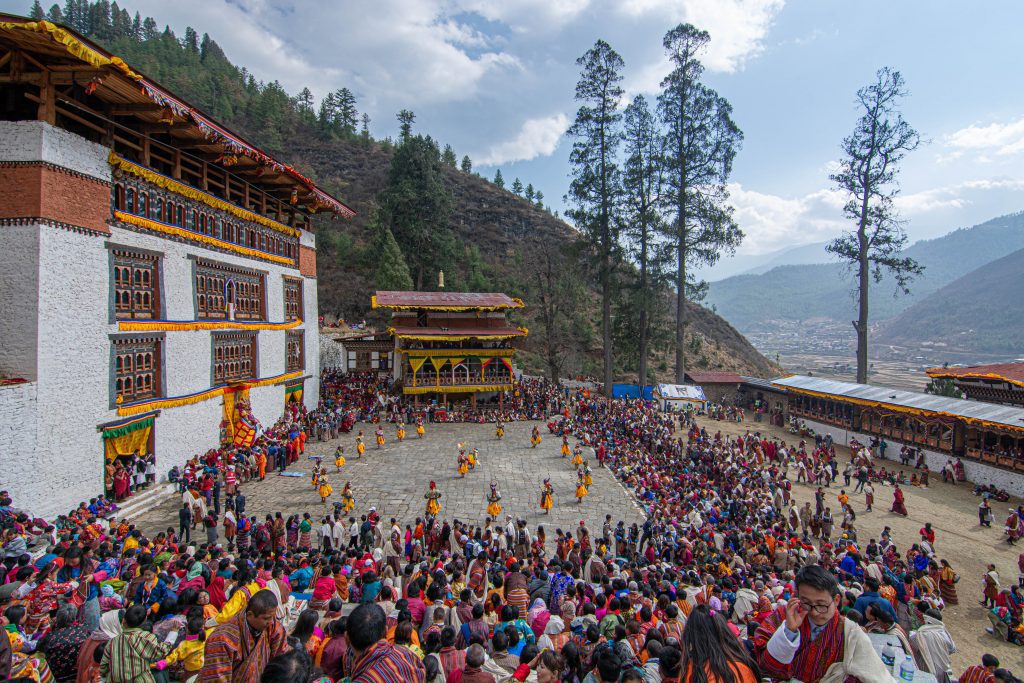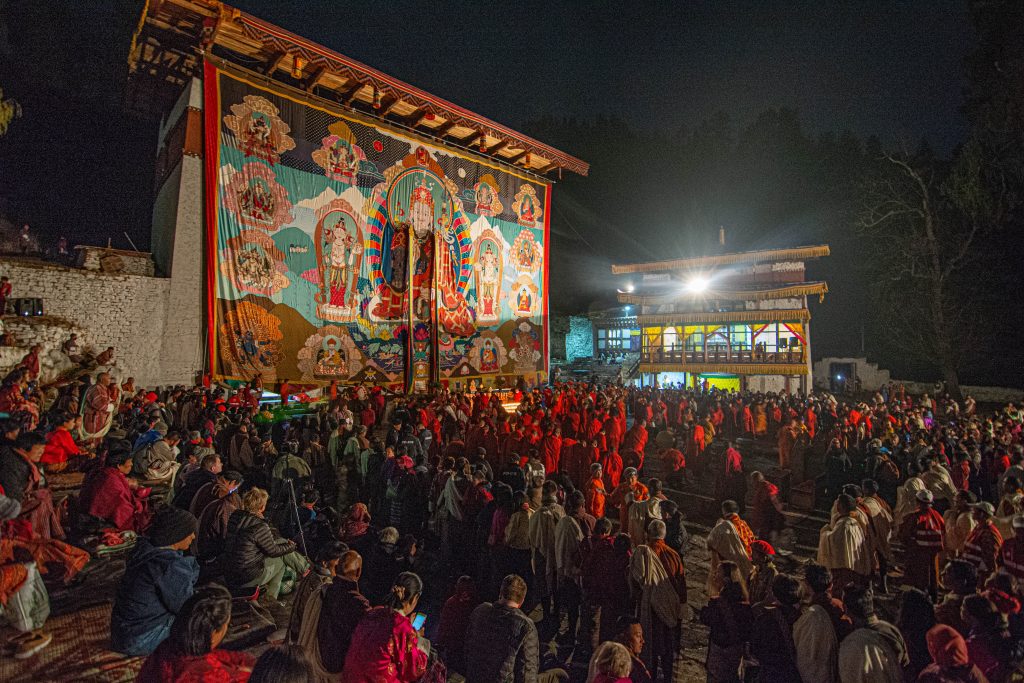
Paro Tshechu Festival is one of the biggest Tsechu festivals in the kingdom of Bhutan. It takes place every spring in Bhutan. The festival commemorates the life and attainments of Guru Padma Sambhava known in Bhutan as Guru Rinpoche. Tsechus are a rich form of all of history where values, spiritual beliefs and mythologies are passed on for generations. Such literature is communicated theatrically through mask dance performances called chham. Monks and laymen from local communities dress in intricate and exotic silk costumes and perform chham. Each performance depicts a unique tale of triumph of good over evil in Buddhism.

Tsechus in Bhutan
Tsechus are considered to be one of the biggest festivals in the kingdom of Bhutan. Adorned in their finest ghos and Kiras, Bhutanese believe that witnessing a tsechu festival cleanses one soul. That explains the massive turnout and the extravagant fashion during tshechus. You can also see the best of traditional textiles during such events.
The celebrations commence on the tenth day of the second month in the lunar calendar. This falls towards the end of March. Tsechus are celebrated to banish evil influences and energy, to ensure good fortune in the coming year.
One of the key performances during the festival is the Raksha Mangcham – the dance of the judgment of the death. It is based on Bardo Thongdrel, a text by Guru Rinpoche and also known as the ‘Book of the Dead’. This is considered to one of the most important performances at a Tsechu. “One must watch carefully so that one can prepare for dead.” says a monk at the event. It’s a little morbid but very necessary.

The Great Tapestry Exhibition of the Guru
The first four days of the festival are mostly filled with Chham performances at the two courtyards inside Paro Dzong and the ground above the fortress. The tshechu finally culminates to the final day of the festival, which begins at 3:00 in the morning. A Chhipdrel ceremony brings in the sacred hundred-year-old Thongdrel. The Thongdrel is the ancient giant applique of Guru Tshengye (the eight manifestations of Guru Rinpoche). The raising of the giant Thongdrel is an experience in itself. A long line of Bhutanese men hold the bottom part of the giant applique infront of the temple. The top is slowly raised with ropes carefully pulling the corners of the sacred Thongdrel as hundreds of devotees pray during dawn. The giant appliqué tapestry of Guru Tshengye is believed to be imbued with special blessings for the viewer. Thongdrel directly translates as Liberation through Sight.

Prayers, Devotees & Countless Offerings
And at dawn hundreds of multiple devotees line up. Throngdrel directly translates as liberation through seeing. It is believed that even getting a glimpse of the Thongdrel will help those who seek blessing from the tapestry. It helps accomplish spiritual merit. His Majesty the King of Bhutan also visits the Tsechu every year. The Thongdrel ceremony is a highlight for many visitors in Paro. Before the rays of the morning sun brazenly falls on the Thongdrel, the sacred relic is taken down and returned back in Paro Rinpung Dzong until it is displayed again in the following year.
It is the people’s deep faith and devotion that makes these festivals unique besides serving its spiritual purpose. Tsechus are moments in the lives of the Bhutanese, the families, friends and guests come together in the festivities and celebrations of this unique festival that will continue on for generations.